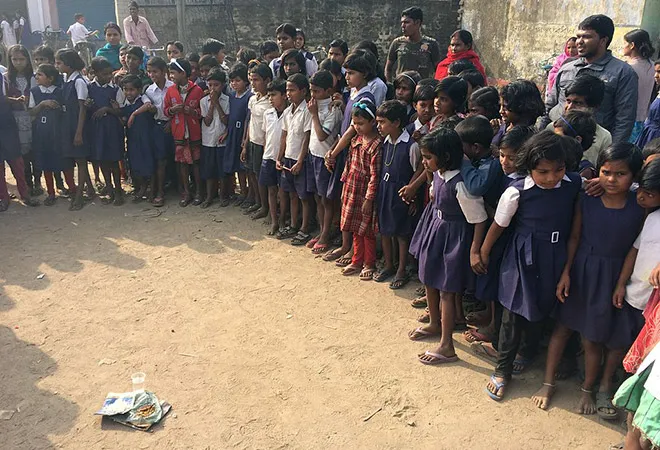Barely a month before the deaths of children in Gorakhpur in Uttar Pradesh, allegedly due to the disruption of oxygen supply in the BRD Medical College, the U.P. Health Minister had addressed a consultation in Lucknow organised by the Observer Research Foundation. He admitted that U.P.’s health system was in the “ICU”, and said he was trying hard to fix it. Only the local media reported this. It is a fact that U.P. has a problem: many of the children who died were being treated for acute encephalitis syndrome (AES), including Japanese encephalitis (JE).
The BRD Medical College, with around 800 beds, provides tertiary health-care services to Gorakhpur and adjoining districts. It is the only tertiary hospital within a 300-km radius. On September 4, 2016, it was reported that 224 children had died of encephalitis in the hospital that year. This hardly made national news. The shocking fact is that if there was no alleged disruption of oxygen supply, the national media and policy experts would not be discussing Gorakhpur now.
Research findings
In U.P., an outbreak of JE has occurred almost every year in four districts between 1978 and 2007, according to research published by the World Health Organisation. Various U.P. governments have set up special wards and set aside specialist doctors for treating the disease. Studies show that in Gorakhpur, incidence of JE has declined from 1.9 per 100,000 in 2010 to 0.5 per 100,000 in 2012, whereas the incidence of JE-negative AES, which is causing a majority of the deaths now, has remained relatively stable over the past five years.
From 2006, the Central government has been conducting vaccination drives in endemic areas of JE. In 2011, the JE vaccine was included in the universal immunisation programme (UIP). While an indigenous vaccine was licensed in India in 2013, a Chinese variant was made part of the UIP because of cost considerations. Under the UIP, two doses of JE vaccine are administered to children. However, a study published in the
Indian Journal of Medical Research showed that only three out of four children in Gorakhpur had received at least one dose of JE vaccine. The coverage of the second dose was low. Failure to administer the vaccine simultaneously with other vaccines was the most common reason for the lack of coverage and has led to many deaths. To expand coverage, adult JE vaccination was introduced in 2014 in high-burden districts of U.P.
Mass awareness and door-to-door campaigns in districts severely affected by encephalitis, about the causes of the disease and ways of prevention, should be a priority.
A study specific to Gorakhpur had suggested a possibility of faecal-oral transmission of the virus by contaminated drinking water. Sanitation, mosquito control, prevention of open defecation, and ensuring clean drinking water can help prevent an outbreak.
The State government needs to allot maximum funds to those districts most affected by encephalitis. More infrastructure is required in Gorakhpur. Perhaps cost-effective PPP models could also be explored to not just reach out, but also conduct research. Some studies suggest that scrub typhus may have some role in JE-negative AES deaths in Gorakhpur; this needs to be looked into. All this has budget implications. Unfortunately, reports indicate that the Central government released only 68% of budgeted funds for communicable diseases, and an even smaller percentage was utilised. Shockingly, the spending capacity of the health system has proven to be a major bottleneck in U.P. Research shows that in 2015-16, U.P. could spend only 58% of the approved National Rural Health Mission budget.
Encephalitis is a predictable disaster. Its transmission intensifies during the rainy season, during the pre-harvest period in paddy-cultivating regions, and in flood-prone districts. U.P. can learn from other States that have a similar risk profile and that have managed to keep JE/AES mortality in control.
Any substantial developmental goal that India has to achieve needs to be achieved by U.P. first, given the size of the State. It is important that the ruling party works towards building a multipartisan consensus around vital issues like health, so that there is policy focus and such instances of health system paralysis are minimal. Incidents like Gorakhpur are an acute manifestation of chronic, systemic problems of the health sector, and the responsibility to improve things at the earliest lies with the government.
This commentary originally appeared in The Hindu.
The views expressed above belong to the author(s). ORF research and analyses now available on Telegram! Click here to access our curated content — blogs, longforms and interviews.




 PREV
PREV


